At 6,088m, the Huayna Potosi climb is a bucket list adventure for many travelers visiting Bolivia.
It’s known to be one of the easier 6,000m peaks to conquer, but do not be fooled.
Huayna Potosi is a beast!
I’m no stranger to altitude trekking, but I completely underestimated just how tough this climb would be.
After a 6-hour summit climb, I made it to the top and have shared all my tips and learnings in this guide to climbing Huayna Potosi in Bolivia.
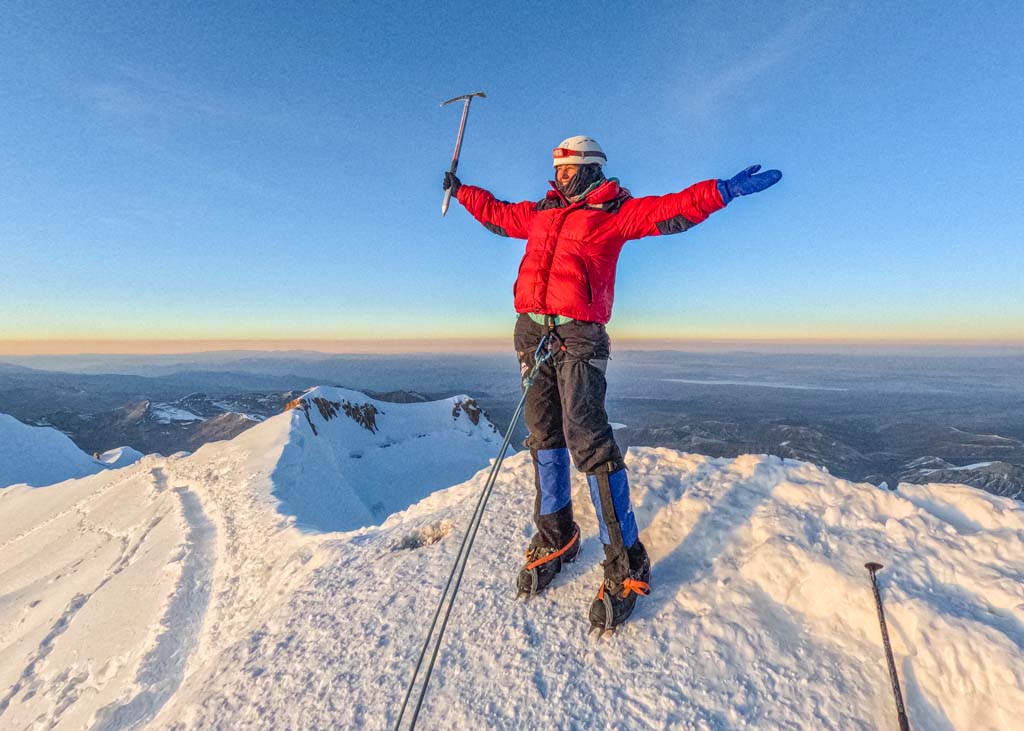
Quick Navigation
Huayna Potosi summary
- Summit height: 6,088m
- Days needed: 3
- Difficulty: Strenuous
- Costs: 850 – 1000 Bolivianos (Bs)
Where is Huayna Potosi
Huayna Potosi forms part of the Cordillera Real mountain range of Bolivia. The trailhead is only 25 km from the capital city, La Paz.
Its proximity to La Paz makes it a popular climb for backpackers and outdoor enthusiasts looking to summit their first 6,000m peak.
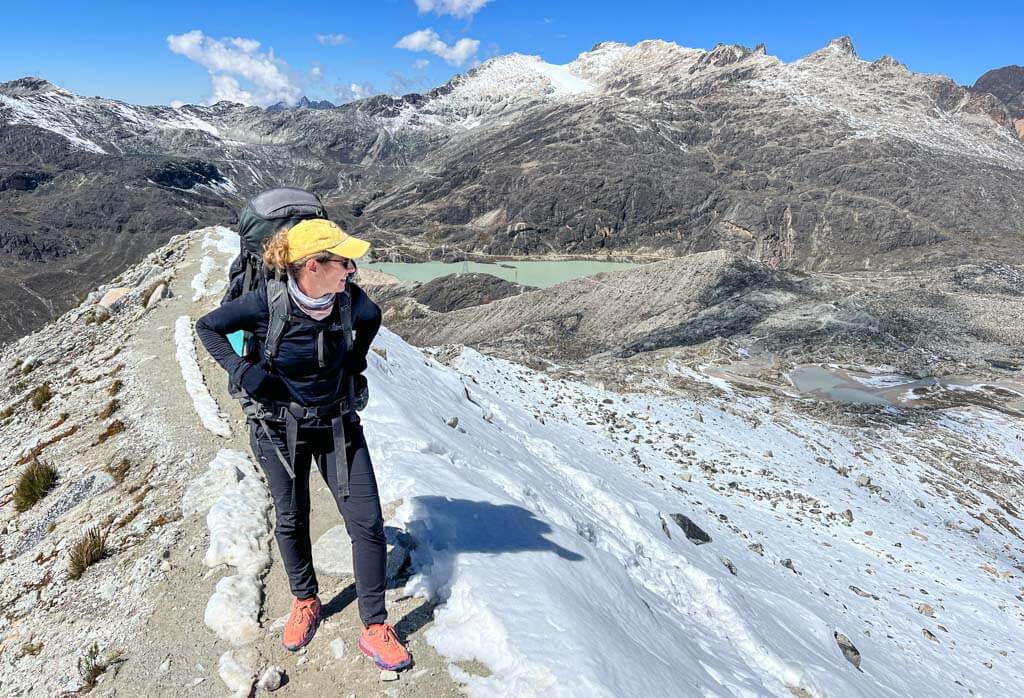
Best time to climb Huayna Potosi
The best time to climb Huayna Potosi is from May to September. This is the dry season and you can expect little to no rain and clear skies.
I successfully reached the summit in May and had perfect conditions.
However, it is still possible to climb Potosi all year round, but your chances of a successful summit are lower.
The climb during the wet season will be more challenging due to the wind, rain and snow, and the route may even be closed if the conditions are dangerous.
Huayna Potosi difficulty
Huayna Potosi has gained popularity amongst backpackers who arrive in Bolivia with very little training and preparation (as was the case with me).
But don’t underestimate its difficulty!
It’s extremely tough, especially if it’s your first 6,000m peak.
While the route is ideal for novice mountaineers as it’s not overly technical, it still requires a good level of fitness.
The summit climb is extremely difficult, and you walk in snow the entire time. I thought it would be a gradual incline until the final stretch, but I was very wrong!
It is steep from the get-go and only gets steeper.
So, can people with no mountaineering experience take on Huayna Potosi? Yes! But do not think it’s going to be easy.
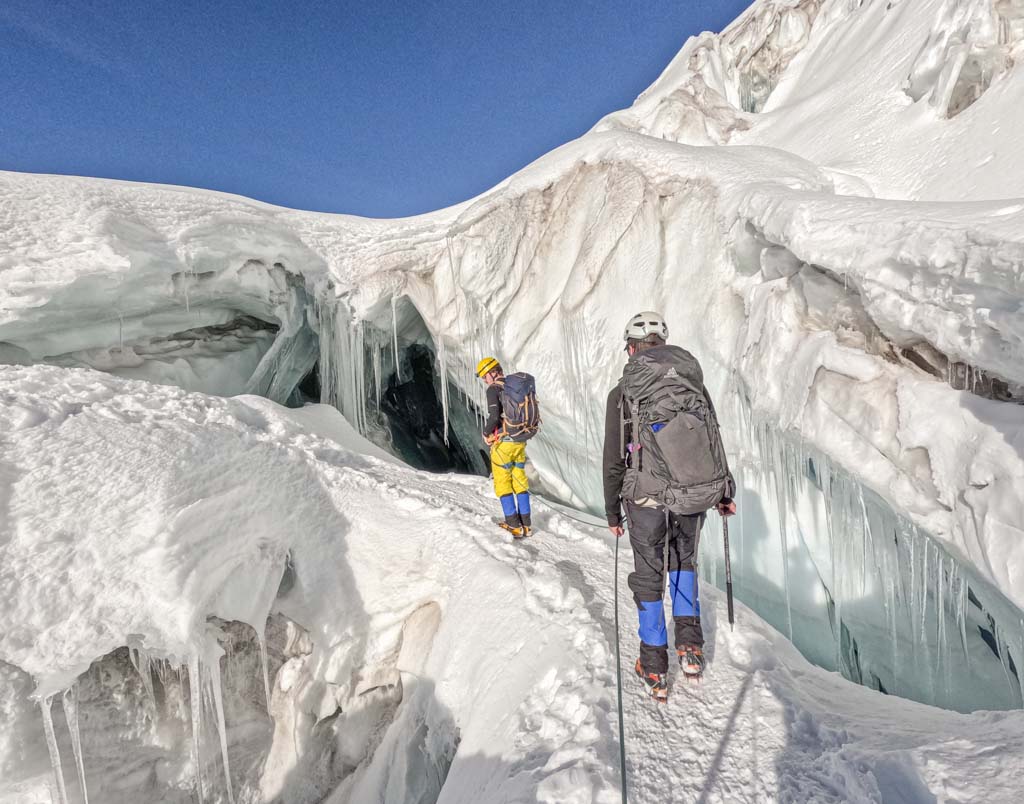
How many days does it take to climb Huayna Potosi
The standard Huayna Potosi climb is a 2-night/3-day tour from La Paz.
However, there is also a 2-day alternative. But I don’t recommend this.
Why? The high altitude.
If you’ve spent time acclimatizing at a higher altitude, have completed other altitude hikes, and are in top physical condition, then you could do the 2-day option.
But for everyone else, stick to the 3-day climb which will increase your chance of reaching the summit.
Costs to climb Huayna Potosi
Huayna Potosi tour costs are really affordable, considering it’s a 6,000m peak.
I paid 850 Bs (Bolivianos) for the 3-day tour with Illimani Mountain Tours. This included a guide, all climbing gear, a sleeping bag, return transport from La Paz, food, and accommodation.
There is an additional 50 Bs entry into the park.
I booked my tour two days before and found that all tour operators were similarly priced.
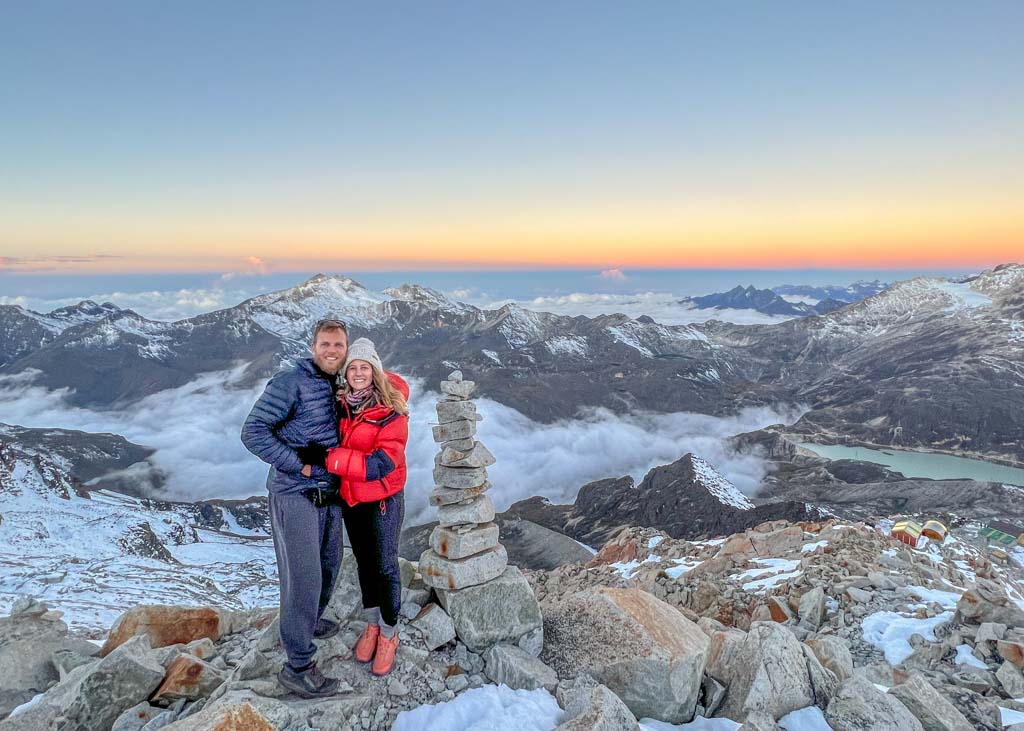
8 Things to know about the Huayna Potosi climb
1. The altitude
Huayna Potosi is 6,088m above sea level. The altitude makes everything a struggle – breathing, sleeping, climbing, eating!
Being at altitude also makes the climb dangerous.
If you don’t acclimate properly, you can get Acute Mountain Sickness, which results from lower oxygen levels. Symptoms include headaches, nausea, vomiting, and loss of appetite.
AMS can be fatal if you don’t listen to your body and continue the trek despite being sick.
2. Spend at least three nights in La Paz
The best way for your body to acclimatize is by spending a few days at altitude before taking on a higher climb.
La Paz is at 3,640m, which is also pretty high. It’s the perfect place to spend your first few days in Bolivia before climbing Huayna Potosi.
I also recommend doing an acclimatization hike during this time. I climbed Austria Peak (5,350m), which is easily accessible on a day trip from La Paz.
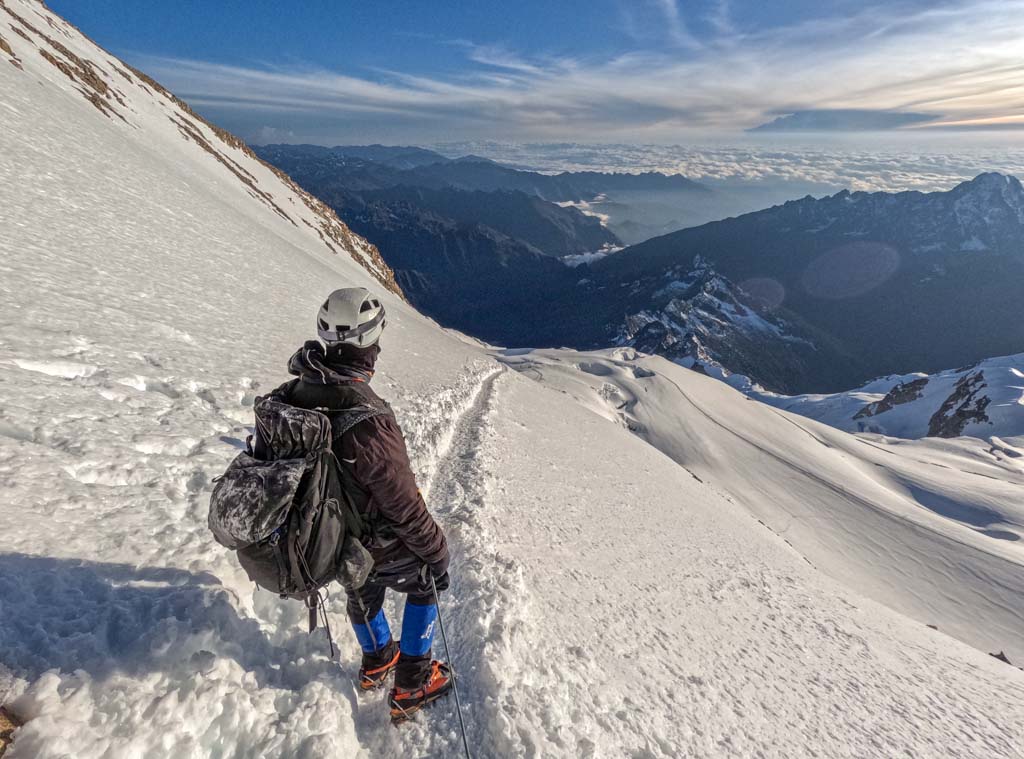
3. Accommodation during the climb
All accommodation for the Huayna Potosi climb is in rustic mountain huts. Most offer large dormitories with ten or more beds. Although the rooms are basic, they are comfortable.
A mattress will be waiting for you – but that’s about it. You’ll need to bring your own sleeping bag. It gets freezing cold overnight, so pack warmly.
There are no showers, but there are toilets.
4. There are two routes to the Huayna Potosi summit
Two routes lead to the summit of Huayna Potosi: the French Route and the Normal Route.
The most common route, and what I recommend, is the Normal Route. This is the easiest option and doesn’t involve any intense ice climbing. But it’s still tough!
The French Route is for experienced climbers only and involves some serious technical sections.
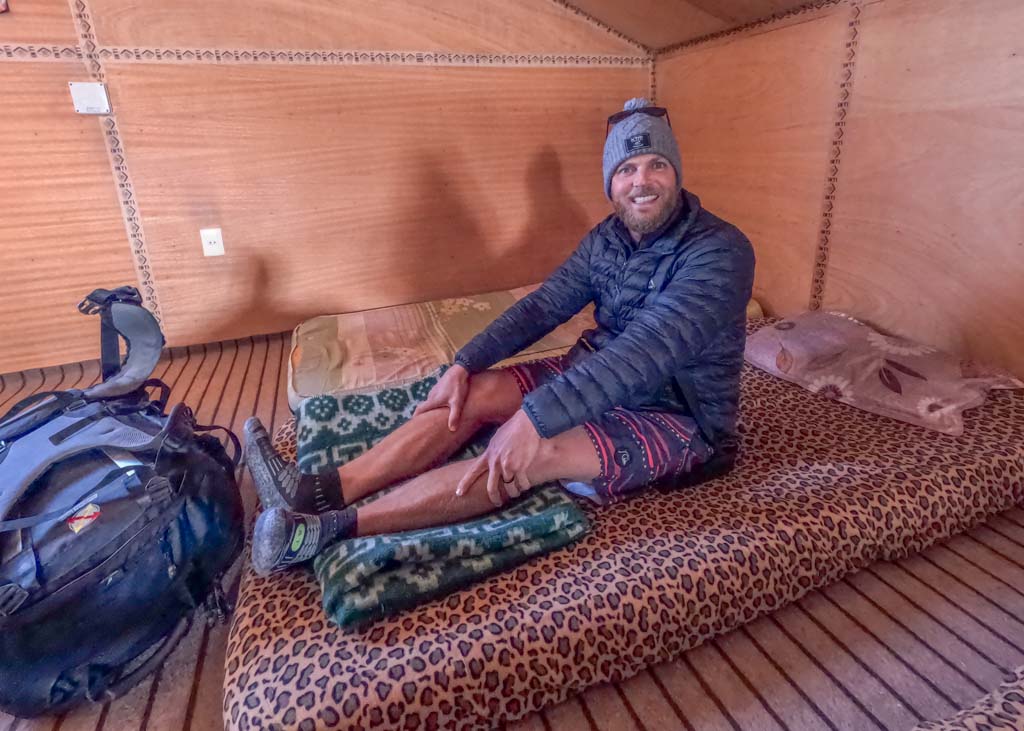
5. You need to reach the summit by 7 am
For safety reasons, you must reach Huayna Potosi’s summit by 7 am. The ice melts after sunrise, making the descent dangerous due to potential avalanches.
Walking at a slow pace is good for acclimatizing. But your guide could ask you to turn around if he doesn’t think you’ll make it by 7 am.
However, you don’t need to run up the mountain to meet the deadline!
I’m a slow hiker and was at my slowest during the Huayna Potosi climb. I reached the summit just in the nick of time!
6. There’s no ice wall at the summit
When I first saw images of people climbing Huayna Potosi, I assumed that the summit climb involved some pretty serious ice climbing.
But no, there is no ice climbing to reach the summit (unless you do the French Route).
So, why do photos show everyone climbing a massive ice wall?
This, as my mountain guide said, is for the “photo.”
As part of the technical training on day 1, you visit a glacier with an ice wall you can climb – if you want to.
It’s a fun activity, and you basically go up and back down again.
Note: You will use your ice axe during the summit climb. But this is more so for support rather than for actual climbing.
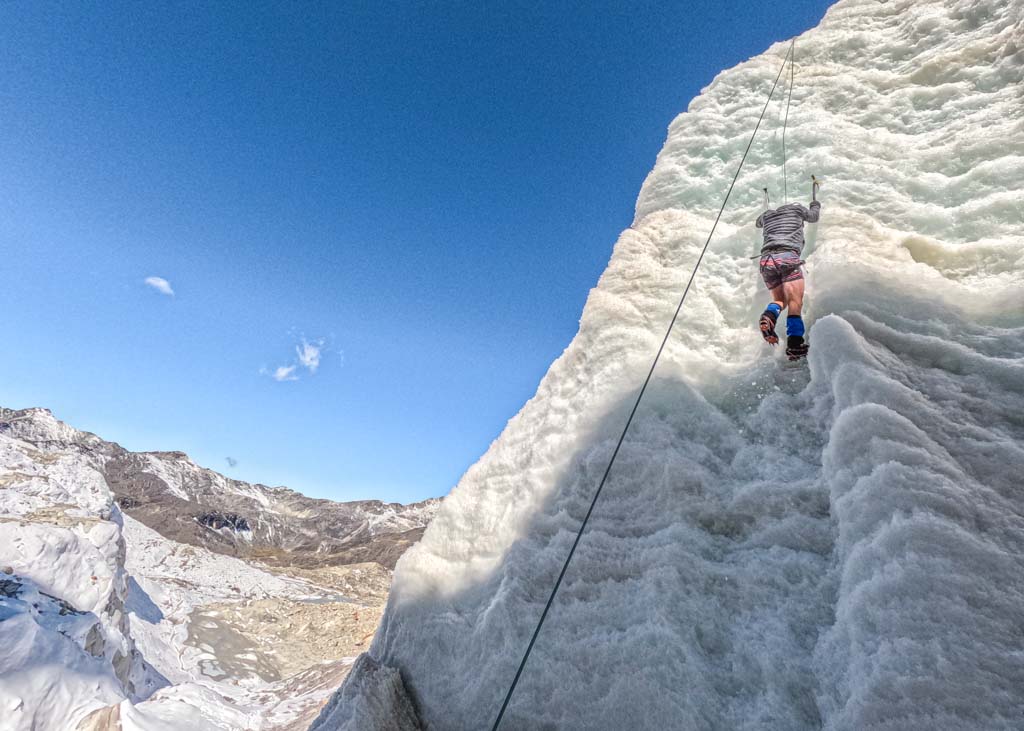
7. Huayna Potosi Deaths
As with all peak climbing, there are risks. There have been deaths on Huayna Potosi. However, it is very uncommon.
This is why you need to take the altitude seriously and acclimatize properly. Listen to your body and walk slowly. If you start experiencing throbbing headaches and nausea, turn around.
There are crevasses, and sections of the summit climb that can be dangerous, so you need to concentrate and watch your footing.
Your guides will put your safety first, so listen to their advice if they’re worried about weather conditions or your health. Don’t take any chances.
8. You can pay for a porter on day 2
On day 2, you must carry all your gear from Base Camp (4,700m) to High Camp (5,200m). This includes your ice boots, crampons, axes, helmet, and harness.
With all this extra weight, your pack will weigh about 17kg. This might be ok for regular treks, but when you’re climbing at altitude, 17kg is a lot.
The guys in my group seemed fine with the extra weight, but I really struggled (I was the only female).
It slowed me down quite a bit, and my body was exhausted when I made it to High Camp.
You can pay 150 Bs for a porter to carry your bag instead.
I was too stubborn and wanted to do it myself. But in hindsight, I should have saved my energy for the summit attempt.
Remember, you’ll start climbing to the summit on night 2. If your body is tired from a strenuous day getting to High Camp, it might affect your chances of reaching the top.
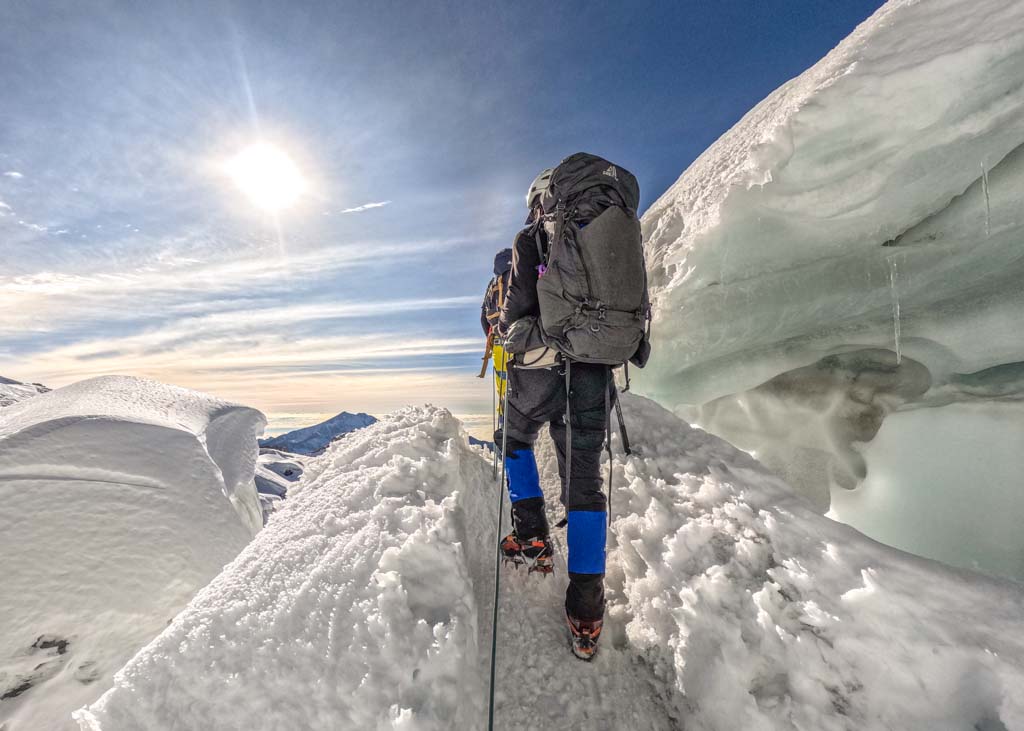
Huayna Potosi itinerary
Day 1: La Paz – Base Camp (4,700m) – Glacier training – Base Camp
On day 1, you’ll leave La Paz at 9 am and drive to Huayna Potosi Base Camp, arriving by 11 am.
You’ll settle in, drop off your gear and have a quick lunch. In the afternoon, you’ll walk from Base Camp to a nearby glacier. Here, you’ll put on all your climbing gear and practice walking in your crampons.
Once you’re comfortable with the technical aspects, you can climb the ice wall. You’ll then make your way back down to Base Camp.
Day 1 is very relaxed compared to days 2 and 3. But it’s still an important day for acclimatization and touching up on your skills needed for the technical sections.
Note: If you’re doing the 2-day itinerary (not 3 days), you will skip this afternoon’s training. Instead, you will go straight to High Camp on day 1 and not spend the night at Base Camp.
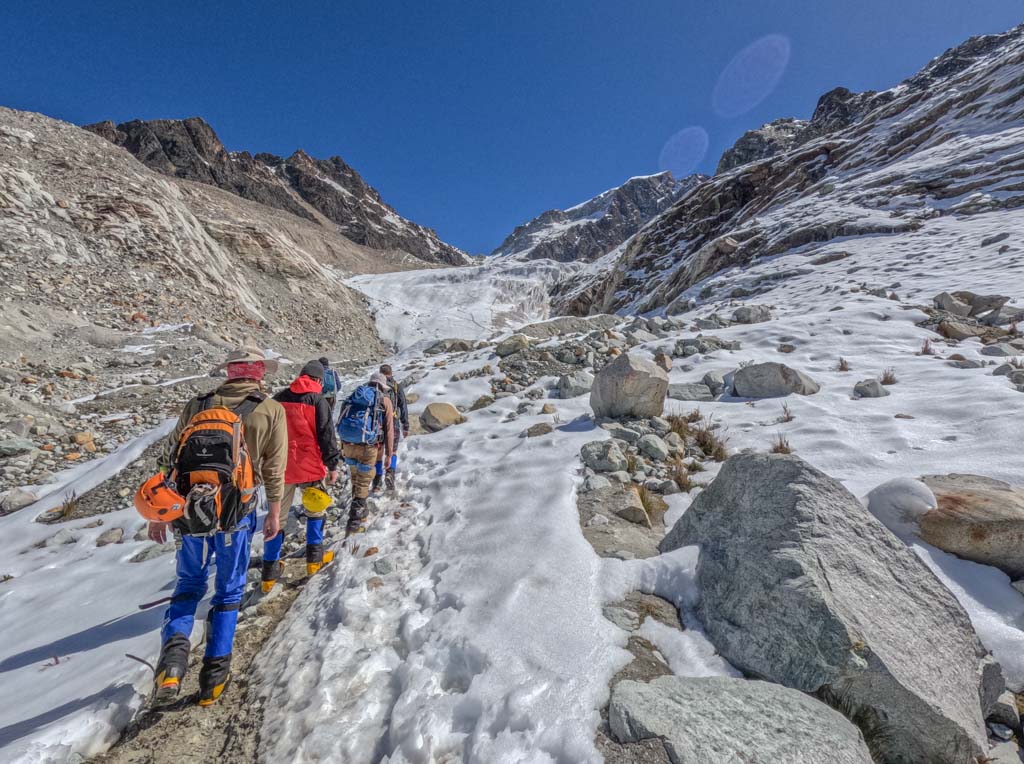
Day 2: Base Camp (4,700m)- High Camp (5,200m)
On day 2, you’ll climb from Huayna Potosi Base Camp to High Camp with all your gear.
This will take 3 to 4 hours. Some sections are in the snow, and the route has numerous switchbacks as it is very steep.
Day 3: High Camp (5,200m) – Huayna Potosi Summit (6,088m) – Base Camp – La Paz
Day 3 is the most challenging: the summit climb.
You’ll start your trek at 1 am and continue for 6 hours to the summit.
Your harness will be attached to your guide and climbing buddy for safety reasons. The first 5 hours are in the dark. But at least you won’t see what’s coming!
The final stretch to the summit is the most intense, but no hectic technical climbing is involved.
After spending 15 minutes taking in the views, you’ll start your descent to Base Camp. This is when you’ll realize just how steep the climb was.
It will take 3 to 4 hours to get down, making it a 10-hour trekking day!
A colectivo bus will be waiting for you at Base Camp, and you’ll be back in La Paz by 6 pm.
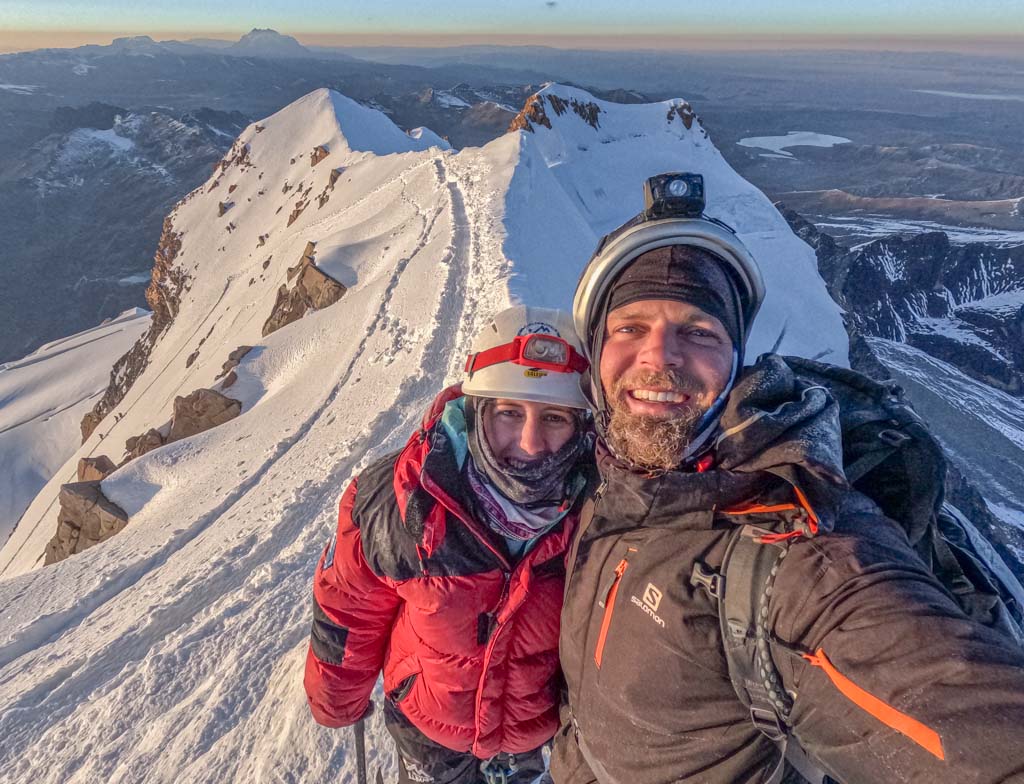
What to pack
- 50 l backpack
- 2 hiking tops
- 2 hiking pants
- 1 set of thermal underwear
- Headlamp
- Fleece jacket
- 2 pairs of thick socks
- Sunglasses
- Water bottles (2l)
- Gloves
- Beanie
- Toilet paper
- Hiking/trail shoes
Provided by your tour operator
- Sleeping bag (-10 degrees)
- Down jacket
- Harness
- Helmet
- Crampons
- Snow boots
- Waterproof pants
- Ice axe
- Gaiters
- Trekking poles
My experience of climbing Huayna Potosi
When I think of Huayna Potosi, the summit climb is the first thing that comes to mind!
After 4 hours of trekking uphill in the snow, I didn’t think I would make it to the summit.
My body was exhausted, my legs were heavy, and I struggled to catch my breath. But I had no headache and no symptoms of altitude sickness.
I knew that I had it in me to get to the summit. I also knew I would never live it down if I failed because “my legs were sore.”
So I kept going and finally made it. It was a mental struggle more than anything else.
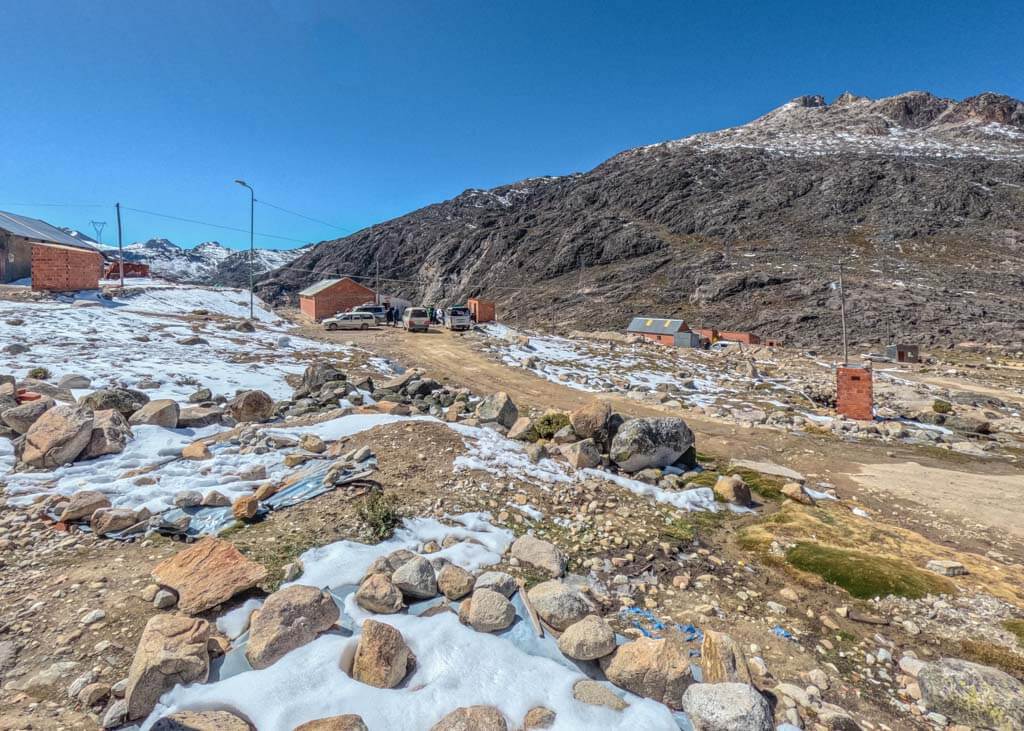
Is Huayna Potosi Worth it
Before climbing Huayna Potosi, I spent weeks deciding whether to do it. I had already summited a 6,000m peak in Nepal and knew what was in store.
Did I really want to put myself through 3 days of torture to get to the summit of Huayna Potosi?
Well, I’m so glad I did!
The views throughout the trek are spectacular. But the climb was about more than that.
It was saying yes to a massive challenge. Pushing myself to my limits both mentally and physically. Meeting travelers from all over the world who were experiencing the same struggles I was. Supporting each other. Encouraging each other.
No, I did not love climbing Huayna Potosi. In fact, I hated it! But it was the most memorable thing I did during my 7-month backpacking trip.
Where to next
After my Huayna Potosi trek, I headed north to the Bolivian Amazon. It was just what I needed – sea level and warmer weather!
If you have time, I highly recommend you do the same.
Like it? Pin it!
Are you planning on climbing Huayna Potosi in Bolivia? Drop me a message in the comments section below if you have any questions.

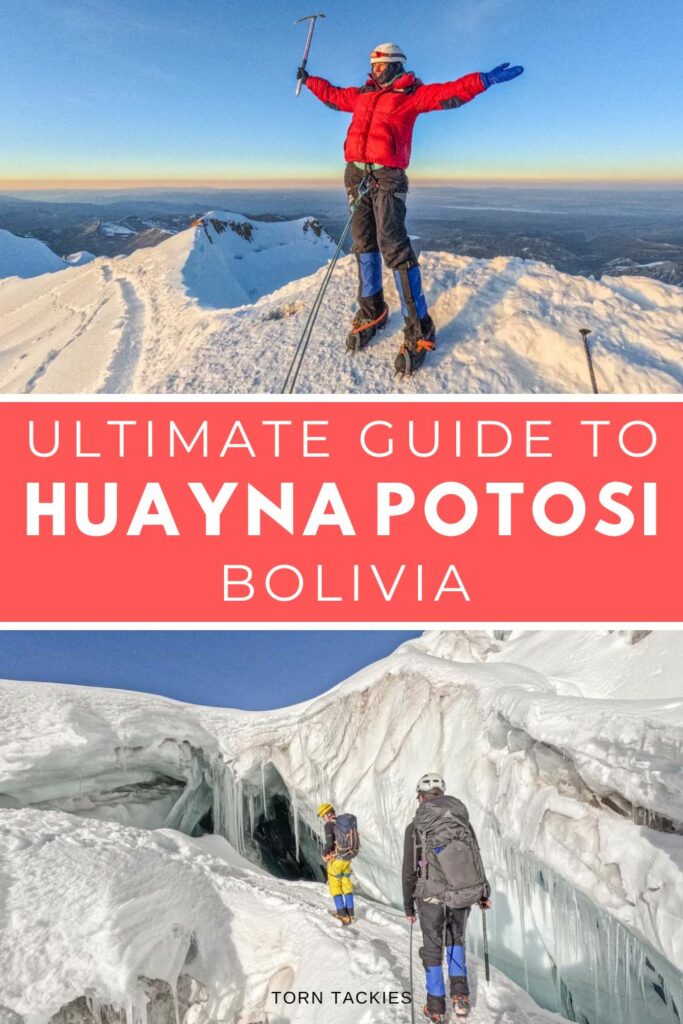
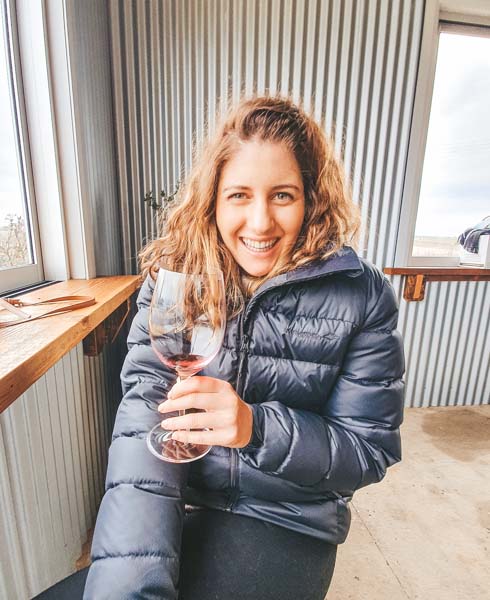
Great blog! Thank you for all the info. Do you have the name of the company you used? Thank you Max and Jacqueline
Hi Max and Jacqueline,
I booked my Huayna Potosi climb with Illimani Mountain Tours. Their office is on the main street where you’ll find all the tour operators. I chose them as a few hikers we met while climbing Pico Austria had organised a small group tour and we decided to join them. We were only 6 in our group which I prefer over bigger tours. Jiwaki also comes highly recommended.
Good luck and enjoy!
Carryn
Hey Carryn,
I was wondering how often you get to take a break on the last day to the summit? I normally walk fast for 15 minutes but then take a longer break compared to walking 30 minutes slower and a shorter break. I’m just a bit nervous because of the 7 am deadline. Hope you can reassure me a bit.
I also see you are wearing a backpack during the descent from the summit. How heavy was the bag? It’s not the 17kg like on day 2 is it?
Kind regards
Hi Thomas,
Have you done any high altitude climbing before? You’ll be walking very very slowly to the summmit – at a snails pace! This is to help your body acclimatize. I don’t recommend walking fast, and neither will your guide. The entire way is a gradual incline and it’s freezing cold, so you won’t want to stop for very long. You do have time to rest (have some water, and a small snack) but you shouldn’t stop for more than 5 minutes – not because of the time, but because you will get too cold and loose momentum.
Don’t worry about the 7am deadline – your focus should be getting one foot in front of the other. I walked slower than anyone and was the last person to arrive at the summit, but I still managed to get there by 7 am. So you’ll be good :).
Regarding the bag, you will need to carry a small backpack to the summit that will have your water, snacks and maybe an additional top layer. I didn’t have a small bag so used the big backpack that used on days 1 and 2. I left all my clothes and gear at high camp, and so the bag might seem big, but it only have water and snacks.
Good luck with your climb.
Carryn